Abstract
The effect of a single dose of cyclophosphamide (CY) on delayed type hypersensitivity (DH) and acquired cellular resistance (ACR) to Listeria monocytogenes infection in mice was studied. Intraperitoneal or intracutaneous immunization with L forms of L. monocytogenes did not result in protection against lethal challenge. A positive DH could be observed when CY-treated mice were intracutaneously immunized with 10(8) or more L forms. Intraperitoneal injection of viable L. monocytogenes resulted only in a narrow dose range in survival on immunization and partial protection on challenge. Protection was accompanied by DH. Intracutaneous injection of Listeria in Freund's complete adjuvant permitted the use of even 10(9) viable bacteria for immunization. This figure was reduced to 10(5) or less for CY treated mice. In normal mice protection was afforded on immunization with 10(7) bacteria whereas 10(3) bacteria were sufficient to protect CY treated animals. All protected mice showed a positive DH. These results demonstrate that CY treatment reduces the dose of viable bacteria tolerated for immunization 10(4) times. On the other hand after CY treatment the doses of bacteria effective on immunization for ACR and DH could be reduced in the same order of magnitude. Reduction of the CY dose resulted in a peak DH with 4 mg CY, but the protection was less than that obtained after treatment with 6 mg CY. A dissociation between ACR and DH was observed by varying the interval between immunization and challenge. In normal mice DH was preceded by ACR, with peaks at respectively 10 and 5 days after immunization. CY treatment caused a delay in the onset of the ACR, followed by an enhanced and slightly prolonged response. The effect of CY on DH consisted of enhancement and prolongation.
Full text
PDF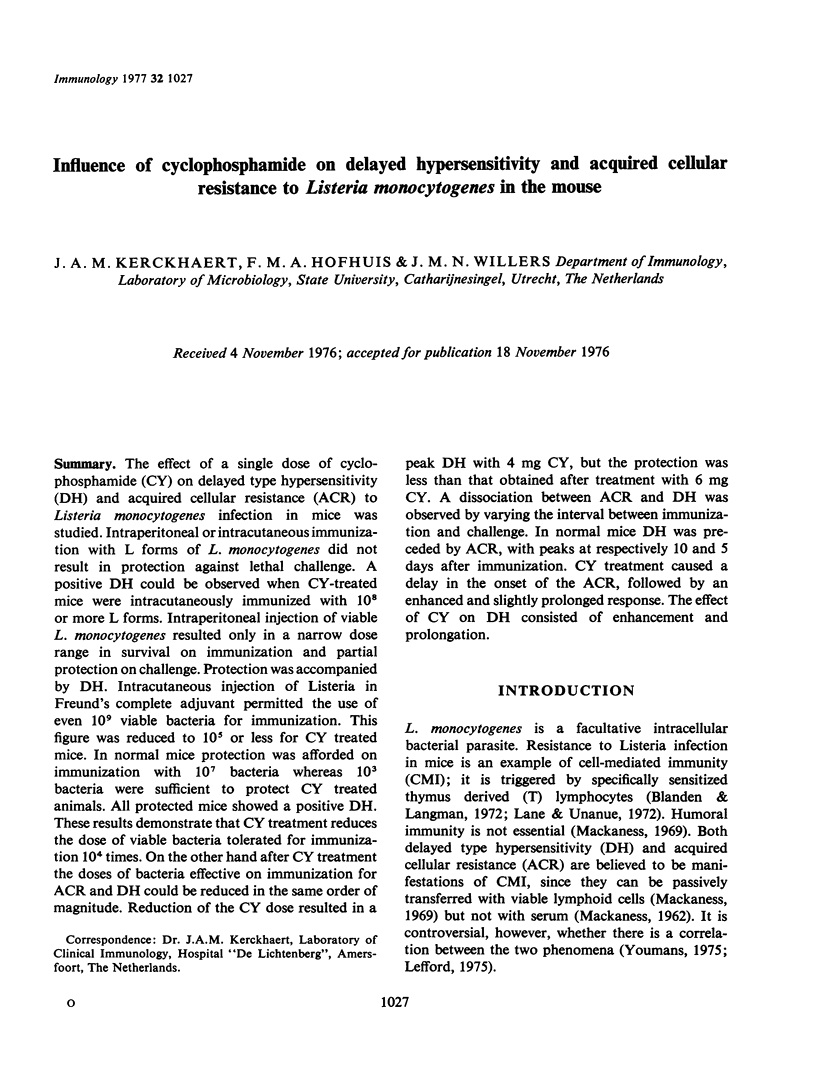
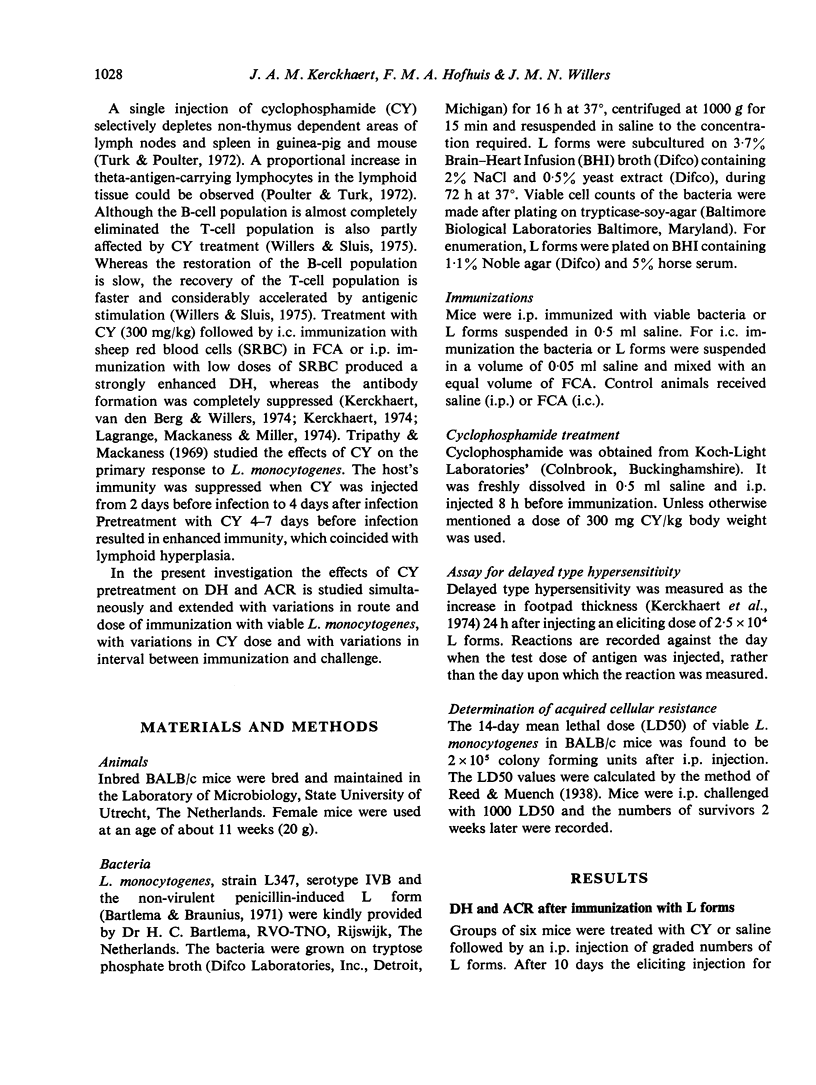
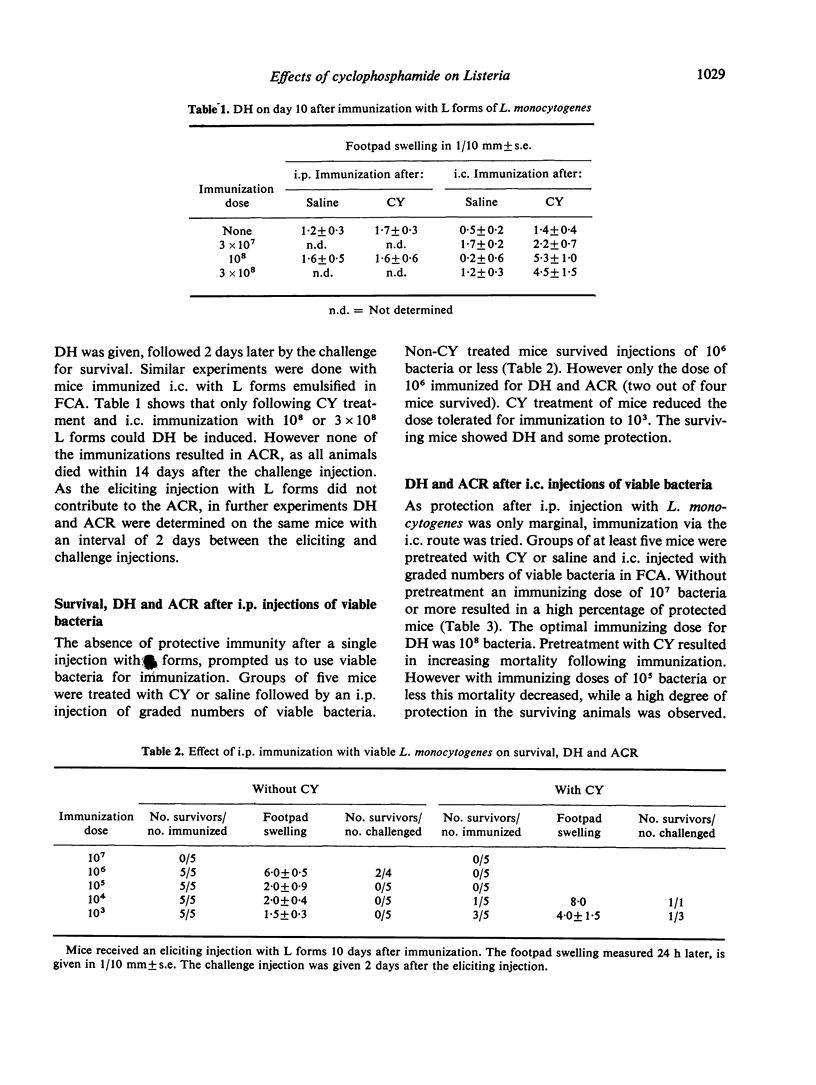
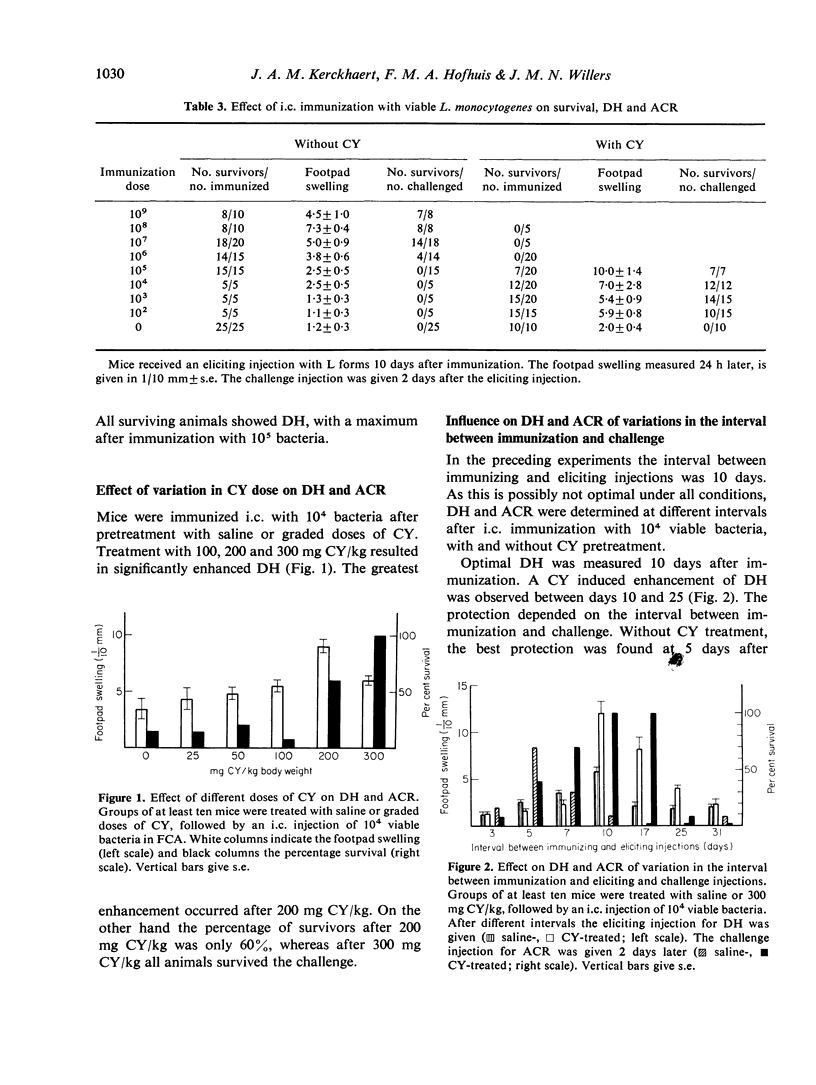
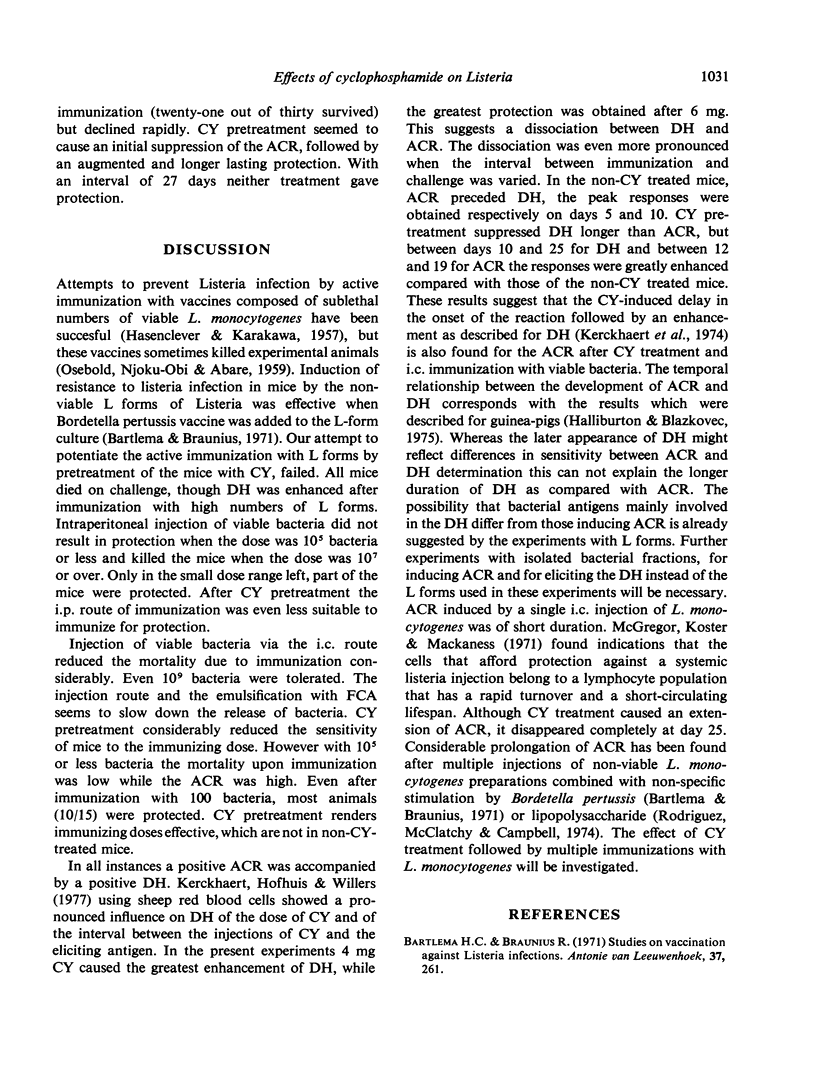
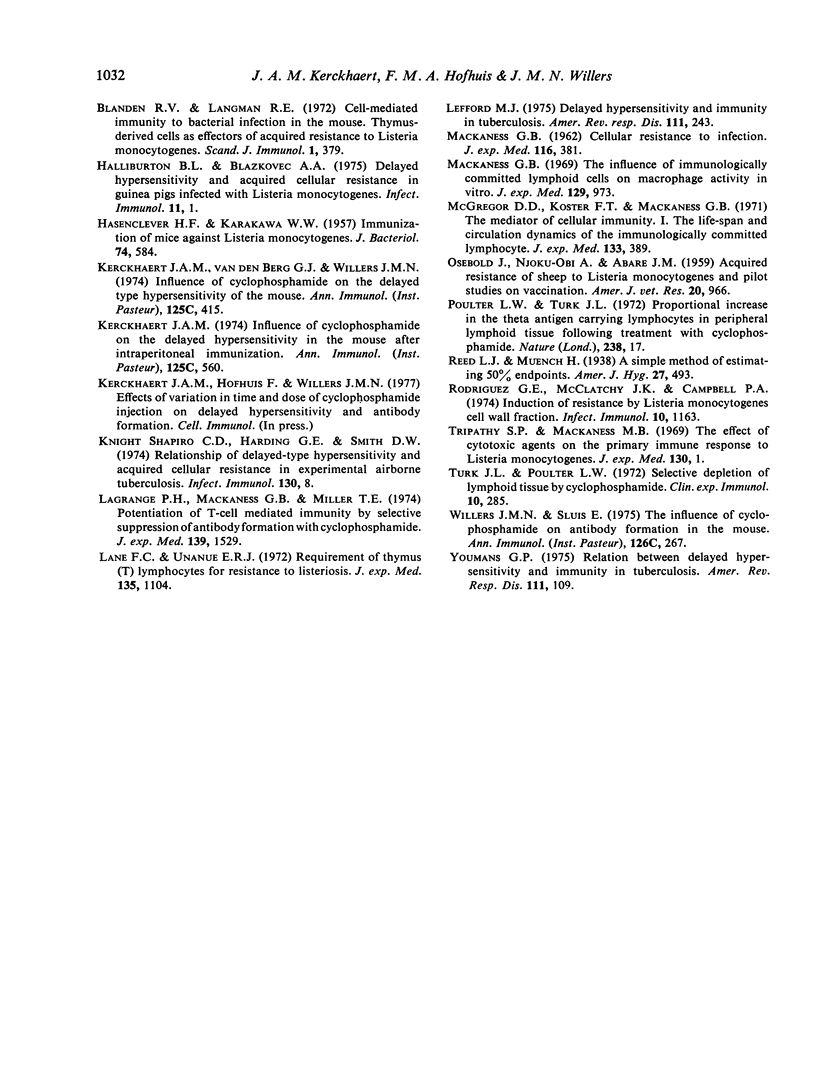
Selected References
These references are in PubMed. This may not be the complete list of references from this article.
- Bartlema H. C., Braunius R. Studies on vaccination against Listeria infections. Antonie Van Leeuwenhoek. 1971;37(2):261–262. doi: 10.1007/BF02218493. [DOI] [PubMed] [Google Scholar]
- Blanden R. V., Langman R. E. Cell-mediated immunity to bacterial infection in the mouse. Thymus-derived cells as effectors of acquired resistance to Listeria monocytogenes. Scand J Immunol. 1972;1(4):379–391. doi: 10.1111/j.1365-3083.1972.tb03304.x. [DOI] [PubMed] [Google Scholar]
- HASENCLEVER H. F., KARAKAWA W. W. Immunization of mice against Listeria monocytogenes. J Bacteriol. 1957 Nov;74(5):584–586. doi: 10.1128/jb.74.5.584-586.1957. [DOI] [PMC free article] [PubMed] [Google Scholar]
- Halliburton B. L., Blazkovec A. A. Delayed hypersensitivity and acquired cellular resistance in guinea pigs infected with Listeria monocytogenes. Infect Immun. 1975 Jan;11(1):1–7. doi: 10.1128/iai.11.1.1-7.1975. [DOI] [PMC free article] [PubMed] [Google Scholar]
- Kerckhaert J. A., Van den Berg G. J., Willers J. M. Influence of cyclophosphamide on the delayed hypersensitivity of the mouse. Ann Immunol (Paris) 1974 Mar-Apr;125(3):415–426. [PubMed] [Google Scholar]
- Lagrange P. H., Mackaness G. B., Miller T. E. Potentiation of T-cell-mediated immunity by selective suppression of antibody formation with cyclophosphamide. J Exp Med. 1974 Jun 1;139(6):1529–1539. doi: 10.1084/jem.139.6.1529. [DOI] [PMC free article] [PubMed] [Google Scholar]
- Lane F. C., Unanue E. R. Requirement of thymus (T) lymphocytes for resistance to listeriosis. J Exp Med. 1972 May 1;135(5):1104–1112. doi: 10.1084/jem.135.5.1104. [DOI] [PMC free article] [PubMed] [Google Scholar]
- Lefford M. J. Editorial: Delayed hypersensitivity and immunity in tuberculosis. Am Rev Respir Dis. 1975 Mar;111(3):243–246. doi: 10.1164/arrd.1975.111.3.243. [DOI] [PubMed] [Google Scholar]
- MACKANESS G. B. Cellular resistance to infection. J Exp Med. 1962 Sep 1;116:381–406. doi: 10.1084/jem.116.3.381. [DOI] [PMC free article] [PubMed] [Google Scholar]
- Mackaness G. B. The influence of immunologically committed lymphoid cells on macrophage activity in vivo. J Exp Med. 1969 May 1;129(5):973–992. doi: 10.1084/jem.129.5.973. [DOI] [PMC free article] [PubMed] [Google Scholar]
- McGregor D. D., Koster F. T., Mackaness G. B. The mediator of cellular immunity. I. The life-span and circulation dynamics of the immunologically committed lymphocyte. J Exp Med. 1971 Feb 1;133(2):389–399. doi: 10.1084/jem.133.2.389. [DOI] [PMC free article] [PubMed] [Google Scholar]
- Rodriguez G. E., McClatchy J. K., Campbell P. A. Induction of Resistance by Listeria monocytogenes Cell Wall Fraction. Infect Immun. 1974 Nov;10(5):1163–1169. doi: 10.1128/iai.10.5.1163-1169.1974. [DOI] [PMC free article] [PubMed] [Google Scholar]
- Tripathy S. P., Mackaness G. B. The effect of cytotoxic agents on the primary immune response to Listeria monocytogenes. J Exp Med. 1969 Jul 1;130(1):1–16. doi: 10.1084/jem.130.1.1. [DOI] [PMC free article] [PubMed] [Google Scholar]
- Turk J. L., Poulter L. W. Selective depletion of lymphoid tissue by cyclophosphamide. Clin Exp Immunol. 1972 Feb;10(2):285–296. [PMC free article] [PubMed] [Google Scholar]
- Willers J. M., Sluis E. The influence of cyclophosphamide on antibody formation in the mouse. Ann Immunol (Paris) 1975 Apr;126(3):267–279. [PubMed] [Google Scholar]
- Youmans G. P. Relation between delayed hypersensitivity and immunity in tuberculosis. Am Rev Respir Dis. 1975 Feb;111(2):109–118. doi: 10.1164/arrd.1975.111.2.109. [DOI] [PubMed] [Google Scholar]


